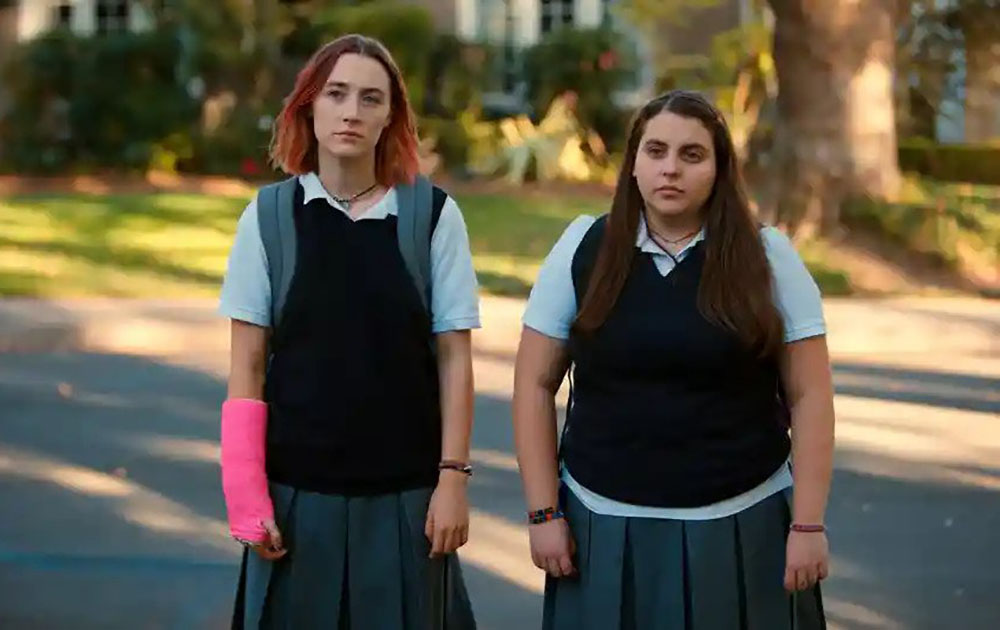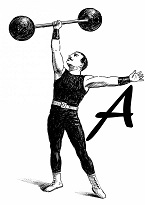Greta Gerwig’s 2017 coming-of-age dramedy “Lady Bird” is a heart-warming solo directorial debut that tackles the trials and tribulations of being a teenager and family relationships. Nominated for a plethora of awards, including ‘Best Picture’ and ‘Best Actress’ at the 2018 Academy Awards, “Lady Bird” features commendable performances from both Saoirse Ronan and Laurie Metcalf. The film can be seen as a billet doux to both Gerwig’s hometown of Sacramento, California (where the film takes place), and Gerwig’s younger self, as the director drew some aspects of the film from her own coming-of-age experience.
Exploring a Complex Mother/Daughter Relationship
Saoirse Ronan stars in the titular role, bringing Christine ‘Lady Bird’ McPherson to life. Ronan gives an incredible performance as the head-strong teen as Lady Bird; she deals with the baggage that comes along with being a teenager, including applying for colleges, friendships, and sex. Although we don’t learn where Lady Bird gets her unusual name from, the title is just one of the ways she shows defiance to her mother Marion (Metcalf). Opposite Ronan, playing Lady Bird’s mother, is Laurie Metcalf. She gives an exemplary performance as an overworked nurse, whose candid demeanour results in frequent arguments with her daughter. But within the moments she’s not disagreeing with her daughter, Gerwig explores their complex mother/daughter relationship.
“Booksmart” star Beanie Feldstein stars as Lady Bird’s best friend Julie, who’s shy, reserved personality contrasts to Lady Bird’s. Lucas Hedges and Timothée Chalamet both play Lady Bird’s short-lived lovers. But like any high-school romance, the boys are complete opposites; Hedges’ Danny is a wholesome theatre kid and Chalamet’s Kyle is the anti-capitalist cool kid; her relationship with each ends sooner rather than later. “Dune” star Stephen McKinley Henderson has a small role in the film as one of the school’s priests. However, after the film reveals his character is suffering from depression, we don’t see him again.
Capturing the Feeling of Being a Parent…and a Teenager
“Frances Ha” cinematographer Sam Levy reunites with Gerwig to provide “Lady Bird” with aesthetically-pleasing cinematography that, mixed with “Moonlight” colourist Alex Bickel’s subtle colouring, gives the film a unique, saturated look. Gerwig’s polished script—with powerhouse performances from Ronan and Metcalf—captures the feeling(s) of being a teenager and a parent. The director shows how Lady Bird and her mother constantly walk the line between rowdy arguments and heartfelt moments. Despite being set in the early 2000s, the various anachronisms in the film, including car models and computers, can’t help but take the viewer out of the 2002/03-time period where the film takes place.

“Lady Bird” is an emotional coming-of-age story. But apart from that, it highlights the strength, fragility, and the frustration within Lady Bird and her mother’s relationship. Gerwig also calls attention to Lady Bird’s growth. After an argument with her mother about her not telling her mother she’d been waitlisted for a school in New York, she finally calls her mother. But instead of calling herself the self-given nickname, she finally embraces her given name; she calls herself Christine and leaves an emotional message for her mother as an attempt to reconcile. Embracing the name shows how she has finally grown up and out of the “Lady Bird” persona while accepting the responsibility that comes with being Christine.
Responsibility, Family, and an Expression of Love
“Lady Bird” is a sentimental film that features picturesque cinematography and sensational performances from Saoirse Ronan and Laurie Metcalf. At its core, it is a film about responsibility, family, and finding who you are. The film is both an expression of Gerwig’s love for her hometown and the main character’s disdain for it as she longs to flee to the East Coast.
“Lady Bird” is available to watch/rent on Apple TV and most other streaming services.


